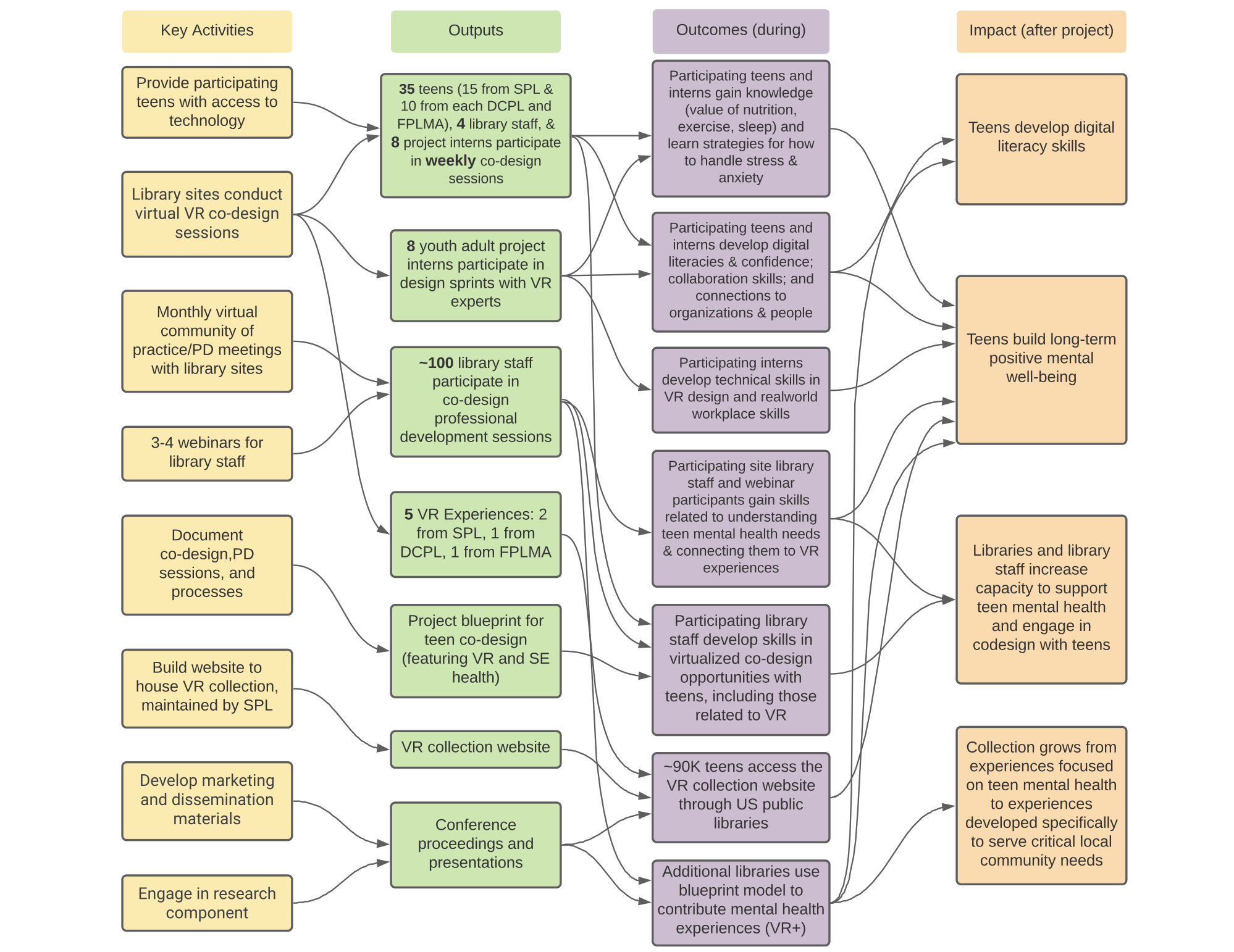Building Your Logic Model
Worksheet #4: Brainstorm Your Logic Model
Use this worksheet to record your thoughts as you read through the following description of the logic model components.
Start with the outcomes. Outcomes are the changes in behavior, skills, attitudes, knowledge, etc. that you would like youth to gain through the program or service you develop. Outcomes are not the activities you will do. They are what you want to achieve.
Based on what you’ve learned with your community stakeholders, ask yourself, what you learned through those conversations and what you would like to work towards, with stakeholders to support youth learning and development. What you are working to achieve is your outcome. For example, if you’ve determined that one of the areas to work towards with stakeholders is to help build teens’ self-confidence, then that can be turned into an outcome. The outcome may be something like, “Teens demonstrate confidence in their problem-solving abilities.”
Next, consider the resources you have for teen programs and services. Who are the community stakeholders you have relationships with and who might be able to help you in support of building teen confidence? What space is available that you can use to work towards this goal? Is there space at the library or at a community site or in multiple locations? What money is available? Do you have a budget for this work and/or does your community stakeholder partner(s) have funds? What about staff and volunteers, who is available to help in this work?
Once you have an idea of the outcome(s) and the resources, consider the activities you might implement in order to provide programs and services for teens that help build confidence. Remember you shouldn’t be doing this alone and will want to think about ways to design activities with stakeholders and teens (see the participatory design section below to learn how to do that) The activities you ultimately move forward with should all be centered on the outcome related to confidence. As you develop the activities you will want to make sure that everything you put in place is working towards that outcome and you will be able to see demonstration that that was reached.
Once you have the activities in place, think about what you will create through those activities? These are the outputs. Often you can quantify the outputs with the number of programs you’ll host, the number of lesson plans you’ll create, and so on. Again, focus on what is can be measured to demonstrate that teens are (or are not) showing self-confidence.
Worksheet #5: Logic Model Template
Use our logic model template (or one of your own) to draft the first version of the logic model for your program or service.
Creating Logic :
In 2021/2022 The Seattle Public Library, The D.C. Public Library, and the LaGrange Public Library, Archive, and Museum in Fayette, TX worked together on an IMLS initiative that brought participatory design, mental health, and VR together: VRtality. Watch the conversation the project team had about outcomes, and compare it to the logic model they developed.

